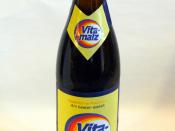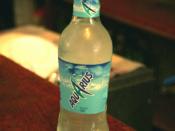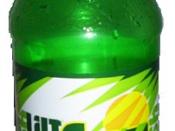Handout 7-1: Quickie Grocery
Quickie Grocery acquired the following five bottles of Corporate-Cola soft drink:
Date | Jan. 2 | Jan. 10 | Jan. 12 | Jan. 16 | Jan. 25 |
Cost | $1.00 | $2.00 | $3.00 | $4.00 | $5.00 |
A January 31 inventory count revealed that two bottles remained on the shelf.
How many bottles were sold in January? 3 bottles
Specific Identification
The Quickie Grocery keeps track of each individual bottle. Suppose the Grocery knows that it sold the bottles acquired on Jan. 2, 12 and 16.
Date | Jan. 2 | Jan. 10 | Jan. 12 | Jan. 16 | Jan. 25 | Total |
Cost | $1.00 | $2.00 | $3.00 | $4.00 | $5.00 | $15.00 |
COGS | $1 | $3 | $4 | $5 | ||
Inv. | $2 | $5 | $7 |
What was the value of inventory on January 31?
What was the cost of goods sold for January?
First-in, First-out ("FIFO")
Assume that the first bottles purchased were the first to be sold. Last bottles are still here.
Date | Jan. 2 | Jan. 10 | Jan. 12 | Jan. 16 | Jan. 25 | Total |
Cost | $1.00 | $2.00 | $3.00 | $4.00 | $5.00 | $15.00 |
COGS | $1 | $2 | $3 | $6 | ||
Inv. | $4 | $5 | $9 |
What was the value of inventory on January 31?
What was the cost of goods sold for January?
Last-in, First-out ("LIFO")
Assume that the last bottles purchased were the first to be sold.
First bottles are still here.
Date | Jan. 2 | Jan. 10 | Jan. 12 | Jan. 16 | Jan. 25 | Total |
Cost | $1.00 | $2.00 | $3.00 | $4.00 | $5.00 | $15.00 |
COGS | $3 | $4 | $5 | $12 | ||
Inv. | $1 | $2 | $3 |
What was the value of inventory on January 31?
What was the cost of goods sold for January?
Weighted Average
Compute an average cost per unit, based on:
Cost of goods available for sale/No. of units available for sale $ 15/5= $3
Date | Jan. 2 | Jan. 10 | Jan. 12 | Jan. 16 | Jan. 25 | |
Cost |
What was the value of...


